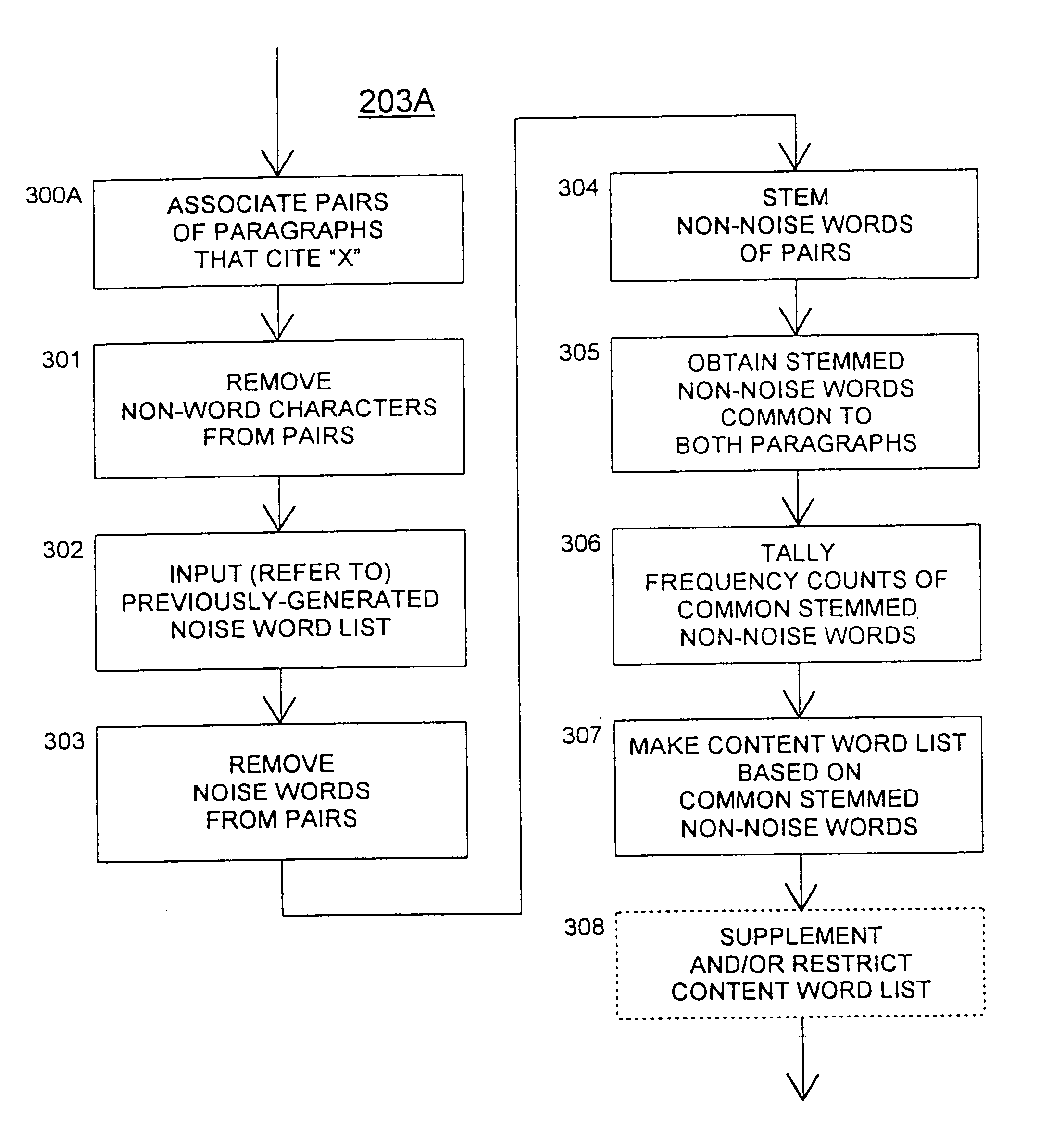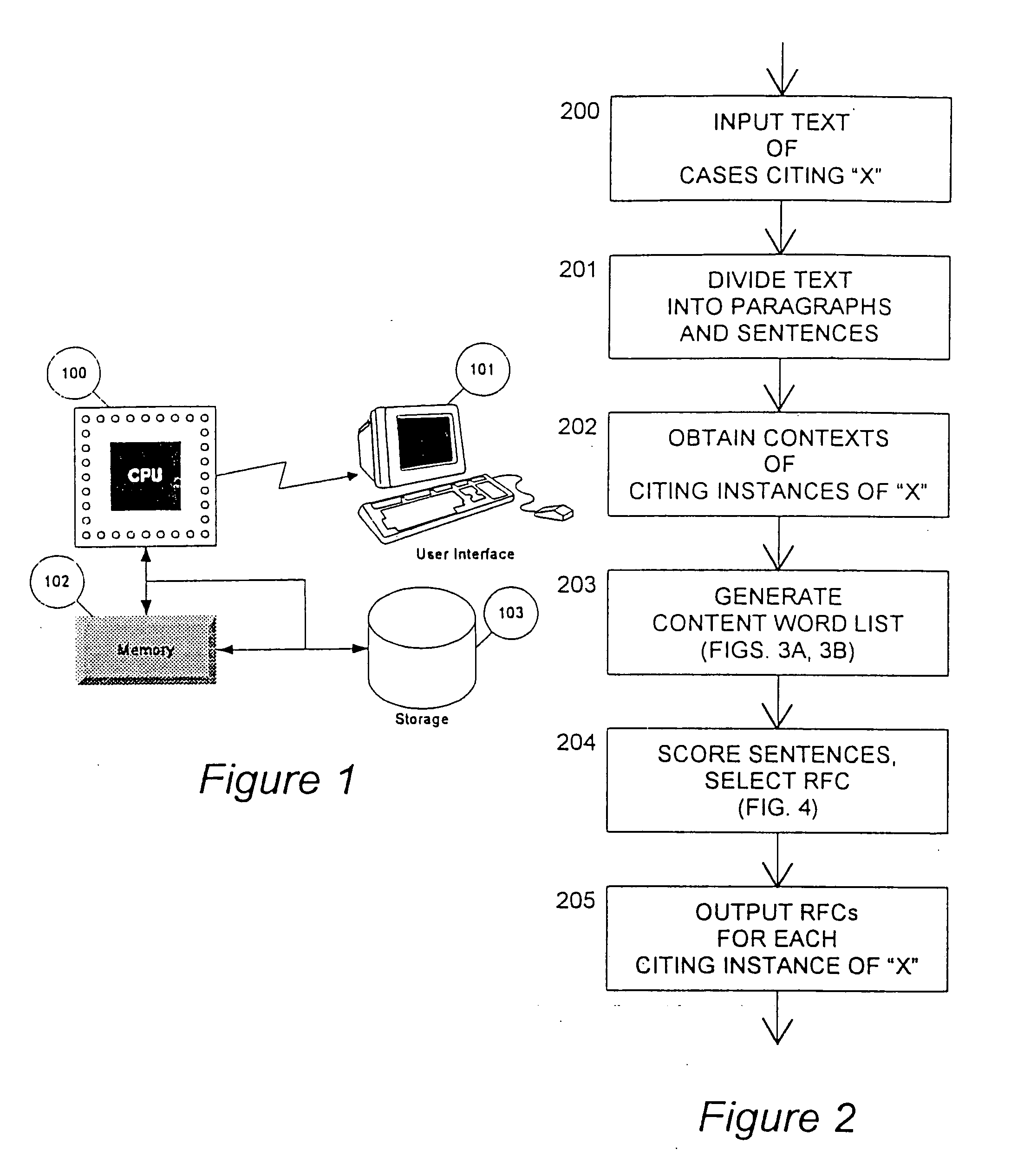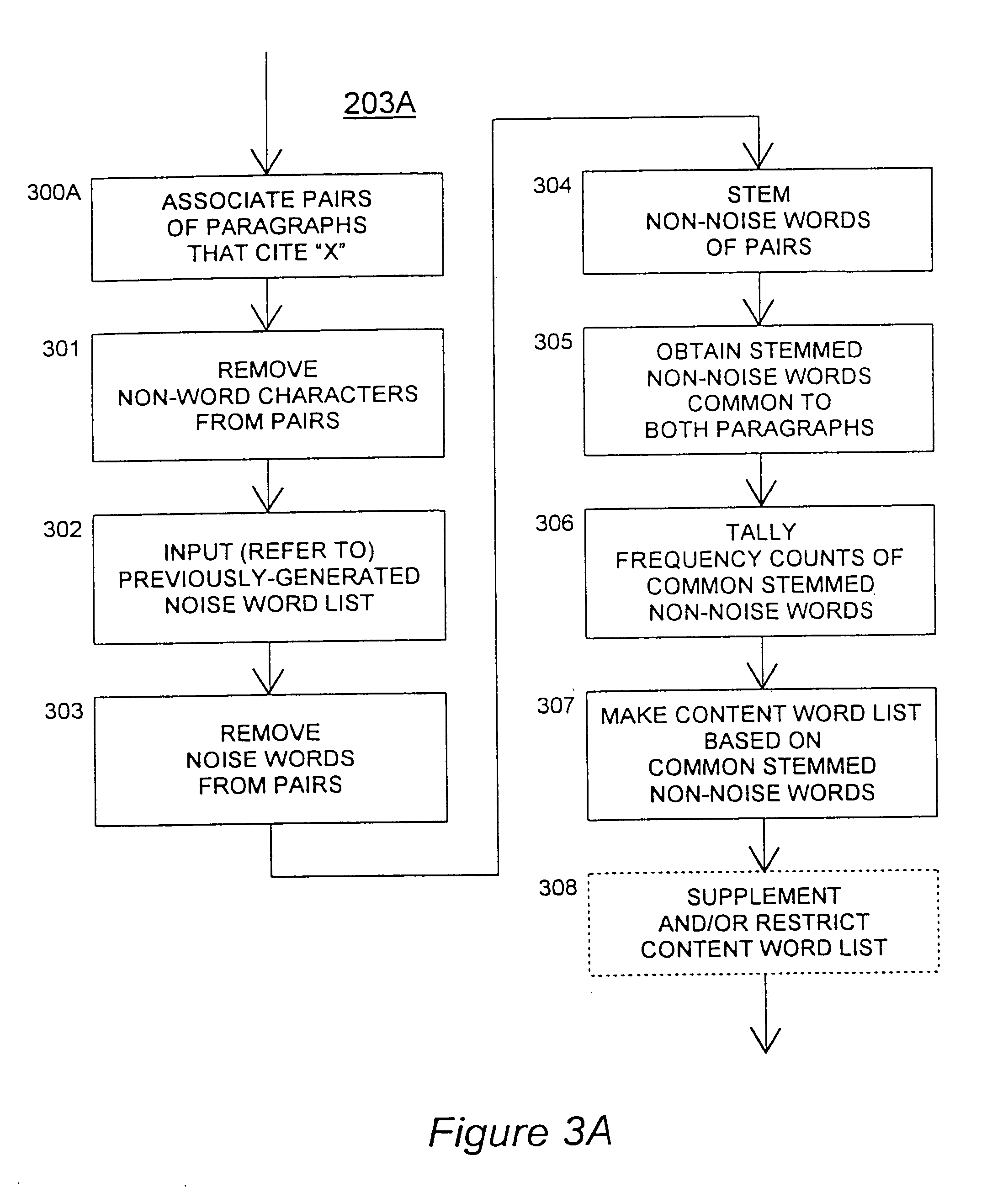Automated system and method for generating reasons that a court case is cited
a technology of automatic text processing and court case, applied in the field of automatic text processing systems and methods, can solve the problems of not intrinsically related, no conventional system, and no conventional system,
- Summary
- Abstract
- Description
- Claims
- Application Information
AI Technical Summary
Benefits of technology
Problems solved by technology
Method used
Image
Examples
Embodiment Construction
[0048] In describing preferred embodiments of the present invention illustrated in the drawings, specific terminology is employed for the sake of clarity. However, the invention is not intended to be limited to the specific terminology so selected, and it is to be understood that each specific element includes all technical equivalents that operate in a similar manner to accomplish a similar purpose.
[0049] For example, in addition to being applied to legal case law documents (court opinions), the invention may be applied to any other type of document that contains citations. Also, what this specification refers to as a “sentence” may be any text unit that makes up paragraphs. Likewise, what this specification refers to as a “paragraph” can refer to any chunk of text that makes up a document and that are made of “sentence” text units.
[0050] Definitions of terminology. As used in this specification, the following terms have the following meanings: [0051] Citing instance—the citation...
PUM
 Login to View More
Login to View More Abstract
Description
Claims
Application Information
 Login to View More
Login to View More - R&D
- Intellectual Property
- Life Sciences
- Materials
- Tech Scout
- Unparalleled Data Quality
- Higher Quality Content
- 60% Fewer Hallucinations
Browse by: Latest US Patents, China's latest patents, Technical Efficacy Thesaurus, Application Domain, Technology Topic, Popular Technical Reports.
© 2025 PatSnap. All rights reserved.Legal|Privacy policy|Modern Slavery Act Transparency Statement|Sitemap|About US| Contact US: help@patsnap.com



